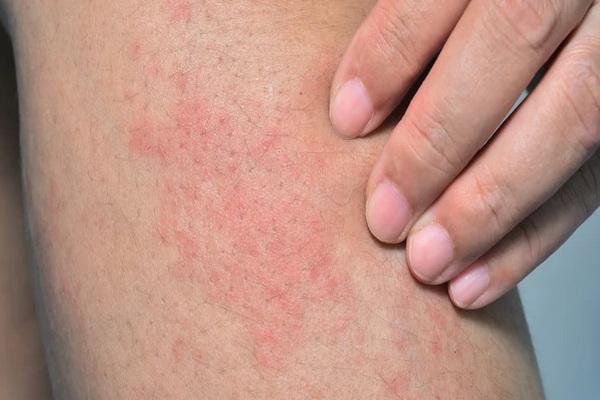A specialist should be consulted with any skin lesion, especially if other symptoms such as itching, redness or fever are present. Bumps on the legs can be of different origins, most often as a result of contact allergies, but can also be a symptom of another medical condition.
Pimples on the legs are not always a cause for concern, but since the skin on the legs is quite sensitive and prone to any abrasions, the appearance of numerous changes should prompt you to see a specialist doctor. Of course, for any changes in the skin, you need to contact a dermatologist, but in less severe cases, a visit to a therapist may be enough. What causes pimples on the legs?
Acne on the legs – causes
The most common cause of skin lesions is allergies, and pimples on the legs can be the result of contact allergies. Skin prone to allergies is exposed to external factors. Very often, pimples on the legs appear when using inappropriate cosmetics or household chemicals. Skin allergies prone to skin changes should not come into contact with, for example, dyes that are perfumed. There are only products for allergy sufferers on the market, but there are also products for sensitive skin. Therefore, if you suddenly develop pimples on your legs, this may be a signal to change your detergent or shower gel. Additionally, the rash may appear on other parts of the body. The rash can take the form of not only pustules, but hives, fluid-filled blisters, and bumps under the skin. Of course, to make sure that your pimples are caused by an allergy, it is worth taking an allergy test, which can be purchased at any pharmacy.
Pimples on the legs can also be a sign of folliculitis. In this case, red spots appear around the hairs on the legs, and the pustules can also fill with pus. It is important not to squeeze out these types of purulent pustules, as other parts of the body can become infected, as purulent pimples can be a sign of bacterial inflammation.
Larger red spots on the legs can be a sign of smallpox. Other symptoms may accompany pustules, including fever, persistent itching, nausea, and vomiting. Then you should see your doctor immediately. Pimples on the legs are also a side effect of certain medications, and an allergic reaction can occur after prolonged use of antibiotics.
Acne on the legs is not the only form of skin change that may indicate the onset of an illness. What diseases cause skin changes?
- scabies
- herpes zoster
- psoriasis
A cluster of skin lesions on the lower limb can also be a sign of herpes zoster.
Acne on the legs – treatment
Leg pimples or other skin lesions should be treated depending on the cause. At the first stage, you should contact a therapist, who, in case of an acute illness, will make an appointment with a dermatologist (the patient needs a referral to a specialist. In case of allergic changes, an allergist should also speak out. T
he selection of drugs and doses should be adapted to the type of disease and its stage. Topical products such as ointments, gel for allergies, a specialist prescribes antihistamines by mouth for infectious diseases, your doctor may also prescribe steroids, and you may need an antibiotic.








